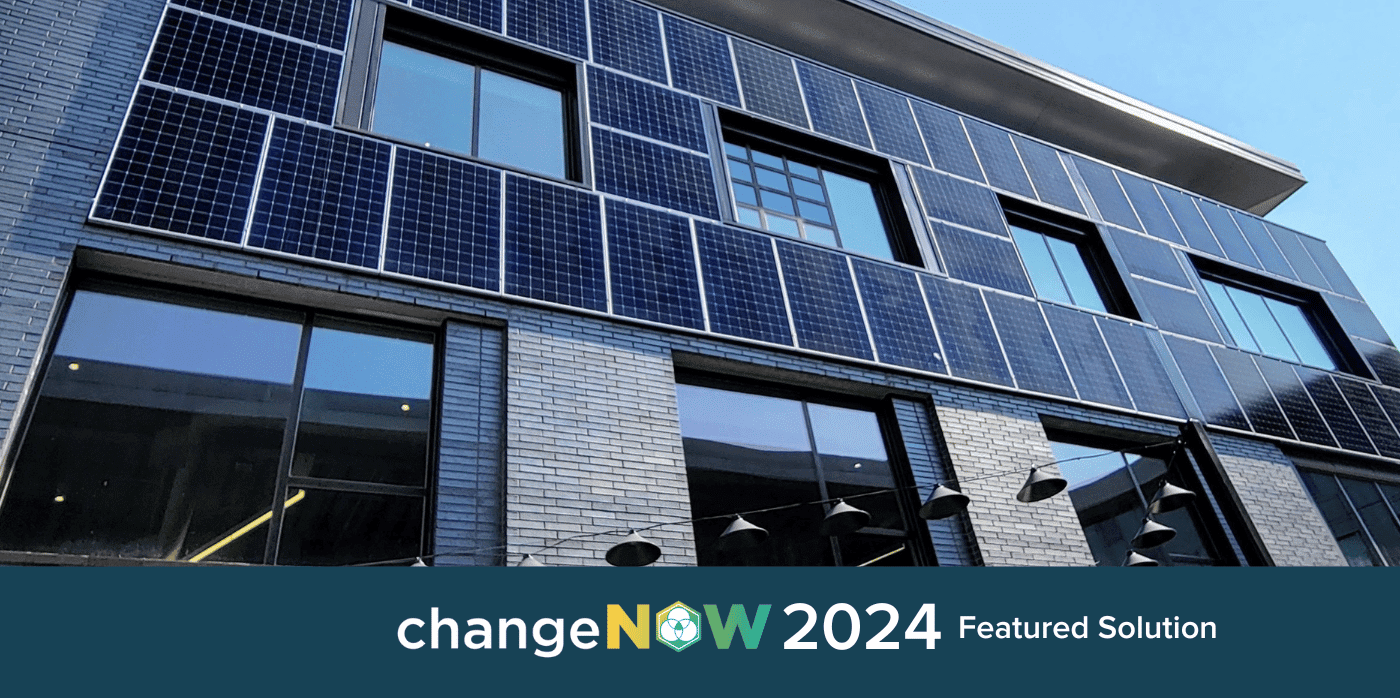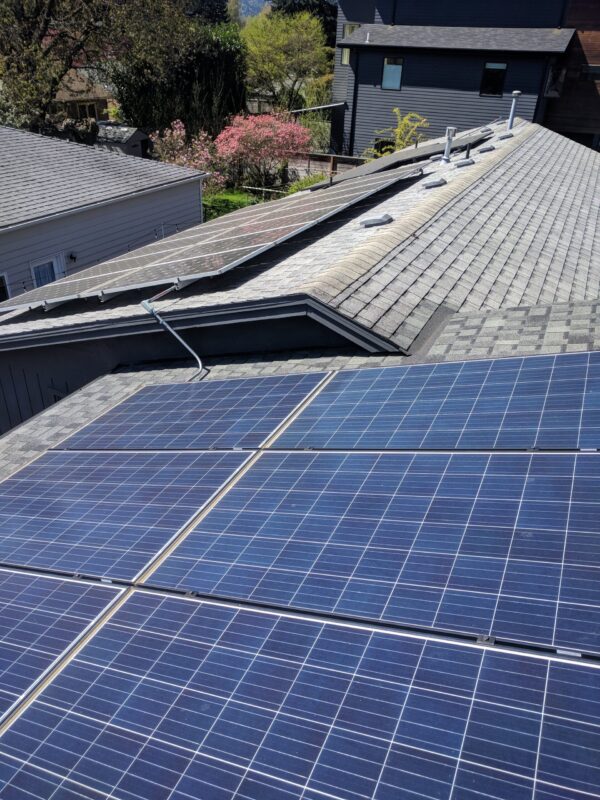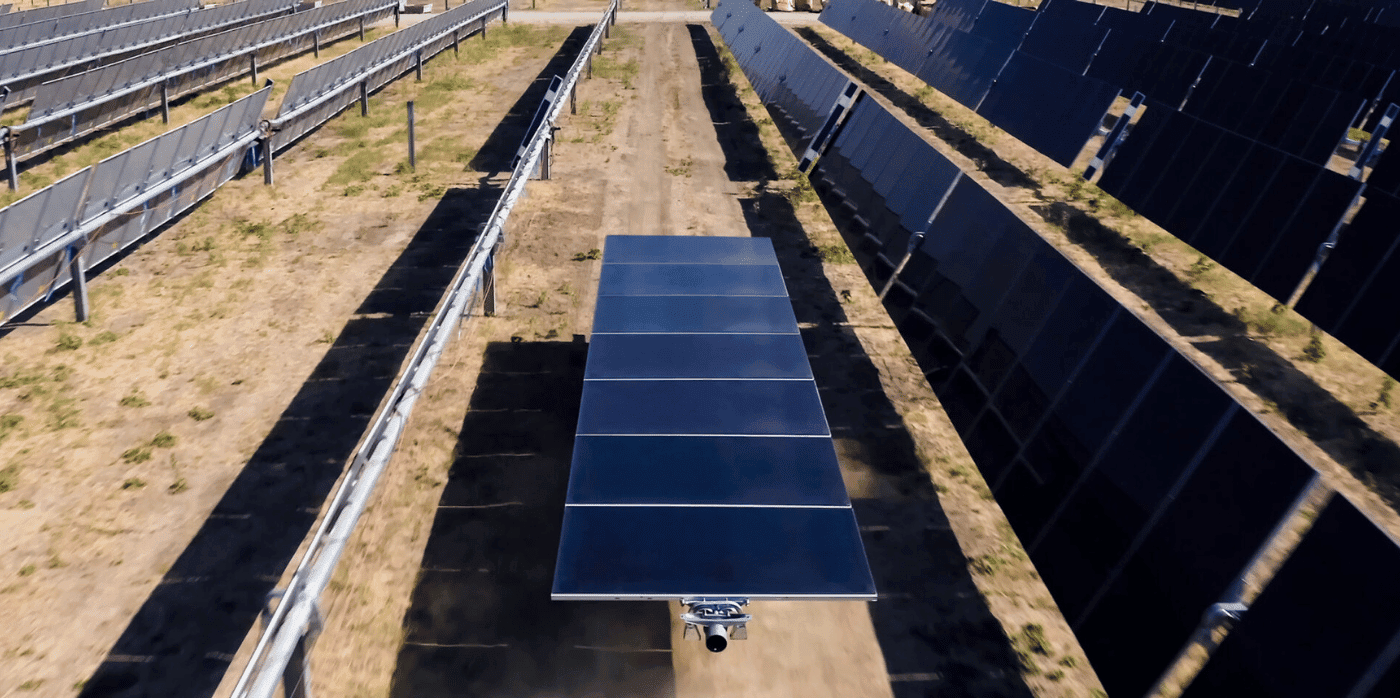Our solar story is a long one, and our most recent installers joked that they don’t usually have repeat customers. We love solar so much that we’ve installed it three times over the past decade and saved thousands on energy bills. If you’ve always thought it was out of reach for you, consider that the cost of panels has fallen from around $8 per watt in 2010 to $2 to $3 per watt today. This is still too expensive for many, but with declining costs, extension of the 30% solar tax credit, and accessible financing, solar is more affordable than ever.
2010
Our first install was on a townhouse that Naomi owned. When Joe moved in, he was so excited about solar that he immediately dumped his life savings into twelve 230 W panels (today’s panels are typically over 400 watts) for the roof. We’re not sure this was the smartest move on his part, as we weren’t married yet, and he had nothing left in the bank. But he justified it as a sign of his commitment to the environment and the relationship.
The total system cost was $20,010. Joe paid $14,490, and the installer received an Energy Trust of Oregon incentive for the remaining amount. Because these were early days, we also received the 30% federal tax credit and $6,000 in state tax credits (that don’t exist anymore), which covered an incredible 75% of the total cost over a period of years. Back then, with more generous subsidies but lower performance, the investment took over 10 years to pay back. With today’s improved performance and lower costs, EnergySage finds that, on average, solar panels pay back in 8.7 years.

7.2 kW solar system on our family home in North Portland.
2012
Two years later, we moved and weren’t in a position to put that much cash down, but our new home had a south facing roof that was perfect for solar. At that time, solar leases were all the rage, and that option ended up being the right choice for us. Through Sunrun (currently the largest solar installer in the US), we put down $6,000 (all of which we received back in state tax credits over 4 years) for 13 solar panels estimated to produce 3,257 kWh per year. We have the option to buy the panels from SunRun at the end of the 20-year lease.
Because we don’t need all the electricity our panels produce when the sun is shining, and we don’t have batteries to store it, about a third of the energy powers our all-electric home and the rest goes back to the grid and provides a credit on our utility bill.
2016
Four years later, we built an addition, which gave us more roof space and room for more solar. We entered into another Sunrun lease, with an estimated 4,054 kWh of annual electricity because the panel efficiency increased that much in those 4 years.
Our now-combined 7.2 kW solar system provides about 60% of our energy needs, and that’s for an all-electric property with regular EV charging and six to seven people living on site. (We are a family of four and have a long-term tenant in an accessory dwelling unit as well as an addition that’s typically occupied by an exchange student or Airbnb guests.)
Combined savings
For at least half the year, our utility bill is only about $12, which is the cost of being connected to the grid. We get credit for our excess summer production, and our bill only exceeds the $12 connection charge for several months in late winter and early spring.
All of our efficiency and electrification efforts, combined with our solar panels, mean we spend a mere $850 per year on energy. That’s one-fifth the national household average and a staggering one-tenth the per capita average! Our solar panels saved us a whopping $7,300 in the 11 years since we installed the first set on this house.
We also subscribe to community solar for the approximately 40% of our energy needs that aren’t met by our rooftop panels, helping us achieve our carbon-free home and transportation.
Are You Ready?
In addition to the 8% of US homeowners who have solar, a recent survey found that 39% have seriously considered solar. If this includes you, you’ll need to first determine your roof viability, which depends on 1. the orientation of your roof (south- and west-facing work best) and 2. the age of your roof (best practice says fewer than 10 years old so it can age with your panels). If your roof is older than 10 years, you can replace it at the same time you install solar. Many contractors offer both services. The Department of Energy presents a number of online resources to understand your roof’s solar potential.
If your roof is a good candidate, you’ll then need to determine how to pay for the panels. Given the average cost of rooftop solar is currently about $20,000 after tax credits, it’s not feasible for most folks to pay with cash. But there are diverse funding options:
- Outright ownership: If you can swing it with cash, solar is a great investment with a reasonable payback period. This is the route we went for our first house. A home equity line of credit or cash-out refinance could also provide the funds.
- Solar loan: Many solar companies now offer financing that requires little to no money down and potentially low interest rates with monthly payments that are offset by lower utility bills. You own the panels outright, receive the tax credits, and are responsible for maintenance.
- Solar lease: If your state offers solar leases, sometimes called Power Purchase Agreements, a solar company could install, operate, and manage panels on your roof and take the tax credits. You commit to paying that company for the power produced by the panels. This is how we got the 28 panels on our current home.
- Bulk purchasing and Solarize: It’s also worth checking if your area has a bulk purchasing program like Solarize, through which you could get a discounted install if a bunch of neighbors are also going solar. The nonprofit Solar United Neighbors organizes solar co-op programs for households to benefit from discounted pricing with bulk purchases.
Thanks to the Inflation Reduction Act, residential solar systems are eligible for a 30% tax credit through 2032. Your state may also offer additional rebates and incentives.

Solar panels could be the victory bonds of the war on climate change. Image by Joe Wachunas.
To explore options, reach out to solar companies in your region. We recommend getting three bids in order to compare costs and proposed system design. A basic Google search will turn up lots of local contractors, so pay attention to reviews, and check if your state has recommended solar contractors like Energy Trust of Oregon’s Trade Ally network.
In addition to the decarbonization and financial benefits of solar, we love that our panels give us the independence of being our own energy producer. We’re more insulated from fluctuating energy costs and get the satisfaction of knowing that most of our energy is produced on our own property.
Plus, rooftop solar is fighting the climate crisis. What’s not to love?

This article springs from a post by Naomi Cole and Joe Wachunas, first published in CleanTechnica. Their “Decarbonize Your Life,” series shares their experience, lessons learned, and recommendations for how to reduce household emissions.
The authors:
Joe Wachunas and Naomi Cole both work professionally to address climate change—Naomi in urban sustainability and energy efficiency and Joe in the electrification of buildings and transportation. A passion for debarbonization, and their commitment to walk the walk, has led them to ductless heat pumps, heat pump water heaters, induction cooking, solar in multiple forms, hang-drying laundry (including cloth diapers), no cars to electric cars and charging without a garage or driveway, a reforestation grant from the US Department of Agriculture, and more. They live in Portland, OR, with two young children.






















